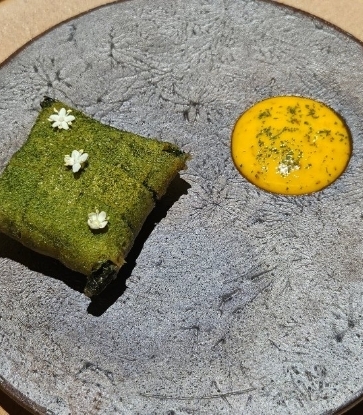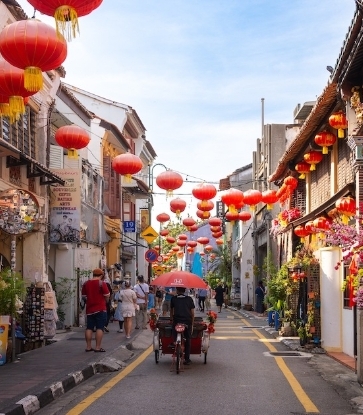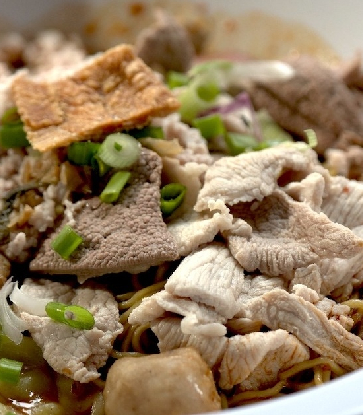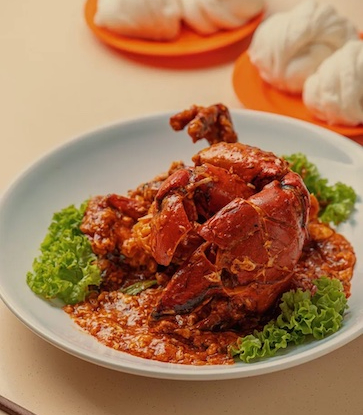Ramadan is the holiest month on the Muslim calendar. This 2024, it falls between 11 March and 9 April, and Muslims the world over would practise abstinence from any food or drink from dawn till dusk. The breaking of the fast at the end of each day, as the sun sets, is known as iftar, and it's usually a time for family and friends to get together and break their fast.
In Malaysia, Ramadan bazaars would pop up in the late afternoons, usually near the local mosques, selling a plethora of goodies for one to break fast with. Some favourite iftar dishes in Malaysia include:

Nasi Biryani
From the fabled spice markets of Persia come the biryani, a much-coveted rice dish, fragrant with cardamom, cloves, and cinnamon. It is sweetened with dried fruits and deliciously rich with marinated meats and aromatic nuts. Its name came from birinj, the Persian word for “rice”.
The biryani acquired its multifarious personas as it journeyed across the vast and varied landscape of the Asian continent through the centuries, assimilating local flavours and taste preferences along the way. In Malaysia, there is a hybrid community renowned for their culinary prowess called the Jawi Peranakans, descendants of inter-marriages between indigenous Malays and Persian, Arab, and Indian-Muslim emigrants. The Jawi Peranakans created the definitive Malay Nasi Biryani by combining elements of its Middle Eastern and Persian origins (saffron, almonds, raisins, cashews) with influences from the Indian sub-continent (yoghurt, ghee, pepper) and, finally, Southeast Asia (pandan leaves, cloves).
Variations of the Malay biryani are vast, and, like any cuisine borne out of home kitchens, each household’s recipe, passed down through the generations, can be unique and distinct. The differences tend to be minimal, and all incarnations are still gestured towards fragrant, saffron-streaked rice, delicately perfumed with exotic spices, blanketing delicate meats of choice — either chicken, beef or mutton —, and adorned with dried fruits and nuts that provided pleasing bursts of sweetness or a satisfying textural crunch.

Murtabak
This thick, aromatic meat-filled pancake never fails to satisfy even the most voracious of eaters. Coming from Arabic origins (its name comes from the Arabic word “mutabbaq”, meaning “folded”), the murtabak in Malaysia was popularised by Indian-Muslim emigrants from the Malabar Coast and Tamil Nadu.
Minced beef, chicken, or mutton is usually mixed with chopped onions, spices, and beaten eggs, before being spread on a gossamer-thin, elastic dough, which is then folded over to form flat, compact parcels, to be griddle-cooked in a generous sea of hot ghee. Crisp on the outside, deliciously moist on the inside, a decadently rich murtabak is usually enjoyed with a gentle bath of dhal curry and a tangy sprinkling of pickled onions on the side.

Nasi Kandar
Nasi kandar is the undisputed Penang state dish, if ever there is one, with its ubiquitous presence and its perennial association with Penang whenever there is any discussion about food among Malaysians. The dish got its name from the kandar, a shoulder-pole used by its vendors in the 19th century, as they convey their wares in a pair of baskets: one containing pots of curries, whilst the other would hold the large rice pot and serving plates. At a time when colonial British-Penang’s port was teeming with activity, these nasi kandar men provided much-needed quick, cheap sustenance to the blue-collar workers at the harbour.
Traditionally, nasi kandar vendors hailed from the Ramnad district of Tamil Nadu, India, whilst the spice women who provided the spice blends came from Tenkasi and Kadayanallur, separate districts within Tamil Nadu. This unique combination of Ramnad cooking techniques using Tenkasi or Kadayanallur spice blends — which only happened in Penang — was what gave nasi kandar curries their unique flavours and aromas.
From its humble origins, the universal appeal of nasi kandar today transcends all social boundaries, and it is often the first meal of choice for inter-state Malaysian visitors to Penang. Nasi kandar, the dish itself, refers to steamed white rice, served on a single plate with a choice of cooked curried meats or vegetables selected by the customer from a serving counter. The nasi kandar man will pile one’s choice of side-dishes onto the plate of rice, before ladling the gravies over the whole concoction. A nasi kandar-man’s skill is judged by how well he mixes and matches the various curry sauces on one’s plate: the resultant melange of differing flavours should come together to be a better sum of its parts.

Satay
Nothing beats the rich, smoky aroma of glistening skewers of marinated chicken or beef, freshly plucked from the naked flames of a fiery brazier. Dipped into a rich, peanut sauce and paired with nasi himpit (compressed rice cakes), these little kebabs make for a delicious meal.

Air Batu Campur
Every Southeast Asian country has its own shaved ice dessert — the Filipinos have halo-halo, the Thais namkhaeng sai, the Indonesians es teler, whereas for Malaysians, it’s the air batu campur, also known by its acronym, ABC, or ais kacang.
Air batu campur is shaved ice drizzled with pink rose syrup, sarsaparilla, and evaporated milk. The lavish mound of ice conceals a bevy of goodies underneath: stewed red beans, creamed corn, finely-cut jelly, attap seeds, and crushed peanuts. Sometimes, a scoop (or two) of ice cream is added on top for more richness. This is the ultimate reward for oneself after a day of fasting.
Some places in Kuala Lumpur and Penang where one can enjoy the above dishes during the breaking of fast period:
Dancing Fish (Bib Gourmand, MICHELIN Guide Kuala Lumpur & Penang 2024)
De. Wan 1958 (Bib Gourmand, MICHELIN Guide Kuala Lumpur & Penang 2024)
Congkak (Bib Gourmand, MICHELIN Guide Kuala Lumpur & Penang 2024)
Jawi House (Selected, MICHELIN Guide Kuala Lumpur & Penang 2024)
Ramadhan bazaars (check the local media sources)





















